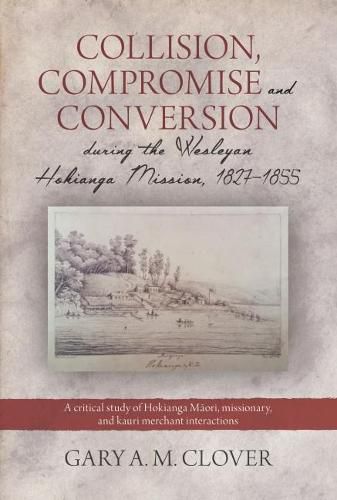Readings Newsletter
Become a Readings Member to make your shopping experience even easier.
Sign in or sign up for free!
You’re not far away from qualifying for FREE standard shipping within Australia
You’ve qualified for FREE standard shipping within Australia
The cart is loading…






This title is printed to order. This book may have been self-published. If so, we cannot guarantee the quality of the content. In the main most books will have gone through the editing process however some may not. We therefore suggest that you be aware of this before ordering this book. If in doubt check either the author or publisher’s details as we are unable to accept any returns unless they are faulty. Please contact us if you have any questions.
Drawing upon modern scholarly insights, Methodist historian, Gary Clover, investigates the nature of culture change and Maori “conversion’ from 1827-1855 during New Zealand’s early contact era. He narrates an absorbing tale of Maori and Pakeha inter-relationships, colourful personalities, and their foresight and failures.
Clover explores how Hokianga Maori, amidst immense turmoil and change, adopted and "Maorified’ European technology, culture, and Christianity. Also how William White, a little known, extra-ordinary Wesleyan Mission Superintendent, moved far beyond the traditional missionary mould to help retain his "Mihanere’ chiefs’ tribal lands. They entrusted White with large tracts to hold in trust. At Mangungu’s chapel, school, farm, and sawyers’ pits, they learnt skills to participate in the new economy, becoming competitive against their European rivals.
But White’s personality flaws and his opponents saw him dismissed in 1836. And outside forces by 1855 brought about the end of all three original Hokianga mission stations.
A well-researched, scholarly, and detailed analysis of culture change and Maori "conversion’ in a region professional historians have largely neglected.
$9.00 standard shipping within Australia
FREE standard shipping within Australia for orders over $100.00
Express & International shipping calculated at checkout
This title is printed to order. This book may have been self-published. If so, we cannot guarantee the quality of the content. In the main most books will have gone through the editing process however some may not. We therefore suggest that you be aware of this before ordering this book. If in doubt check either the author or publisher’s details as we are unable to accept any returns unless they are faulty. Please contact us if you have any questions.
Drawing upon modern scholarly insights, Methodist historian, Gary Clover, investigates the nature of culture change and Maori “conversion’ from 1827-1855 during New Zealand’s early contact era. He narrates an absorbing tale of Maori and Pakeha inter-relationships, colourful personalities, and their foresight and failures.
Clover explores how Hokianga Maori, amidst immense turmoil and change, adopted and "Maorified’ European technology, culture, and Christianity. Also how William White, a little known, extra-ordinary Wesleyan Mission Superintendent, moved far beyond the traditional missionary mould to help retain his "Mihanere’ chiefs’ tribal lands. They entrusted White with large tracts to hold in trust. At Mangungu’s chapel, school, farm, and sawyers’ pits, they learnt skills to participate in the new economy, becoming competitive against their European rivals.
But White’s personality flaws and his opponents saw him dismissed in 1836. And outside forces by 1855 brought about the end of all three original Hokianga mission stations.
A well-researched, scholarly, and detailed analysis of culture change and Maori "conversion’ in a region professional historians have largely neglected.